Africa, the world’s second largest continent, is a cradle of civilization boasting breathtaking landscapes, diverse ecosystems, and a rich tapestry of cultures. Discover 5 interesting customs in Africa and immerse yourself in the heart of this vibrant continent. From the ancient rituals of the Maasai to the unique fashion of the Himba, these traditions offer a glimpse into the diverse and fascinating cultures that have shaped Africa.
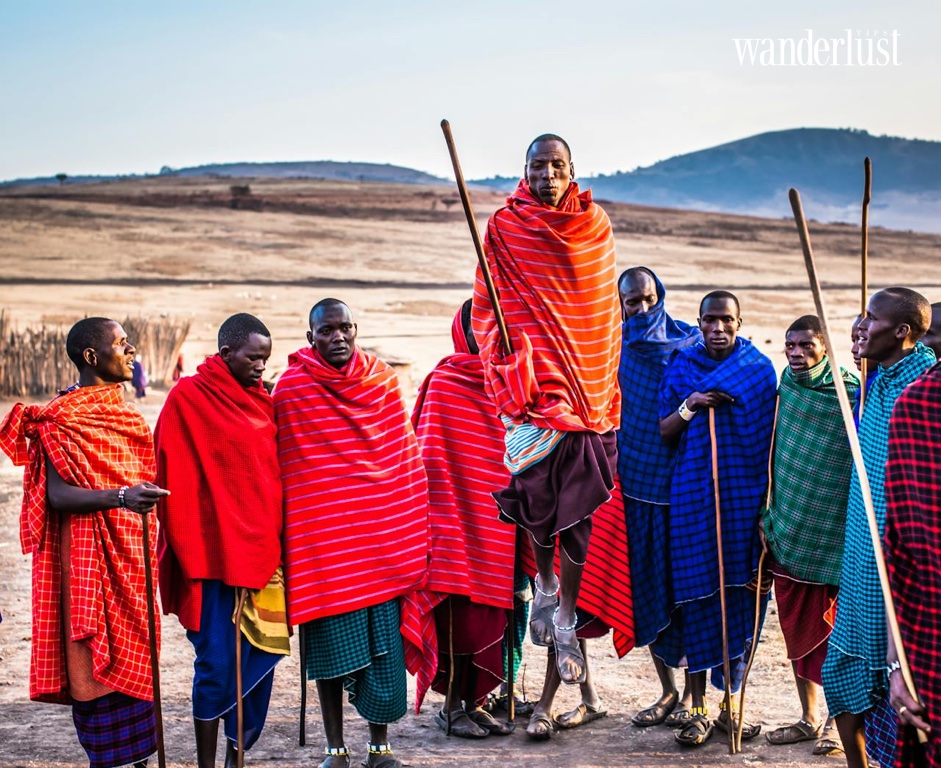
The Gerewol festival: A celebration of beauty and competition among the Wodaabe men
In the vast expanse of Niger, the Wodaabe tribe has a unique and intriguing tradition: the Gerewol festival. More than just a simple celebration, it’s a vibrant and colorful beauty pageant where Wodaabe men showcase their talents and beauty to win the hearts of women.
The highlight of the festival is the Men’s Beauty Contest. Unlike traditional beauty pageants, in Gerewol, it’s the men who take center stage. They adorn themselves with elaborate makeup, paint their faces, wear colorful attire, and dance to display their beauty. For the Wodaabe, a handsome man has large, round eyes, white, even teeth, and a tall stature. They’ll go to great lengths to meet these standards.
A particularly striking aspect of the festival is the practice of men “stealing” other men’s wives. If a man is sufficiently attractive and talented, he can capture the attention of a married woman. If she agrees, they can choose to leave her husband and be with the new man.
The Gerewol festival provides an opportunity for young people to find suitable partners. Through the festival, they can express themselves and find someone they love. The festival celebrates male beauty and encourages men to take care of themselves. Gerewol is an integral part of Wodaabe culture, helping to preserve and promote traditional values. In Wodaabe society, marriage is not just a legal bond but a personal choice. Wodaabe women have the right to choose their partners. They are not bound by strict societal rules. Beauty is considered a high value in Wodaabe culture.
The Gerewol festival of the Wodaabe people is a vivid testament to the diversity and richness of human culture. Despite its unique and distinct features compared to other cultures, this festival still conveys meaningful messages about love, beauty, and freedom.
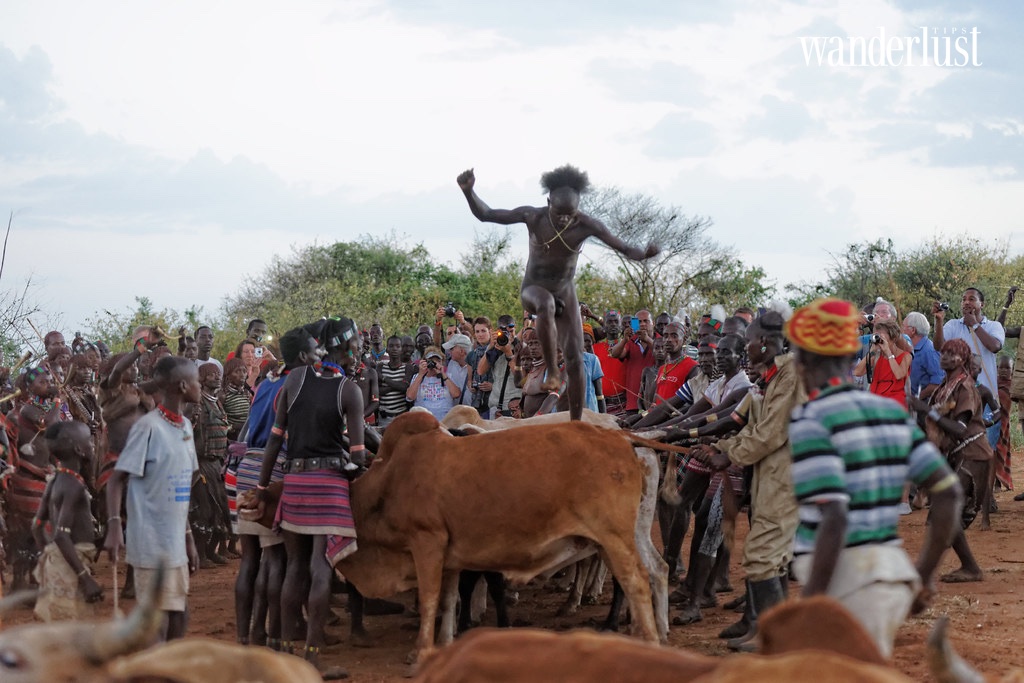
Bull Jumping: A Challenging Rite of Passage for the Ethiopian Hamar People
In the vast expanse of Ethiopia, the Hamar tribe has a unique and challenging rite of passage known as bull jumping. This is not merely a simple ceremony but a vibrant and colorful festival that marks the significant transition from boyhood to manhood for young men.
In this festival, young men must strip naked, run, jump, and land on the back of a galloping bull. To overcome this challenge, the young men must possess great physical strength, courage, and exceptional body control. The bull jumping ritual holds deep significance for the Hamar people. Successfully completing the bull jump proves that a young man is ready to become a true man, possessing the strength and courage to protect his family and community. This ritual is seen as a way to connect generations, passing down cultural values from ancestors to descendants. It also honors the strength of the bull, a sacred animal to the Hamar people.
Bull jumping represents a special respect and connection between humans and these animals. Before participating in the festival, young men undergo rigorous preparation. They train physically, learn how to control their bodies, and become familiar with the bulls. The festival typically lasts for several days and includes various activities such as dancing, singing, and traditional rituals. The highlight of the festival is the dramatic bull jumping. The young men will take turns jumping over the backs of well-trained bulls.
In addition to bull jumping, the young men must also overcome other challenges such as: Being whipped. The girls of the tribe will use whips to strike the backs of the young men who have completed the bull jumping ritual. This is seen as a way to express affection and admiration. Circumcision is also an important part of the coming-of-age ceremony for Hamar boys.
Although modern life is increasingly encroaching on the Hamar community, the bull jumping ritual is still maintained and preserved. This is a way for the Hamar people to preserve their unique cultural identity and pass it on to future generations.
The bull jumping ritual of the Hamar people is a vivid testament to the diversity and richness of human culture. Although it may seem brutal and dangerous, this ritual carries deep cultural values and significance.
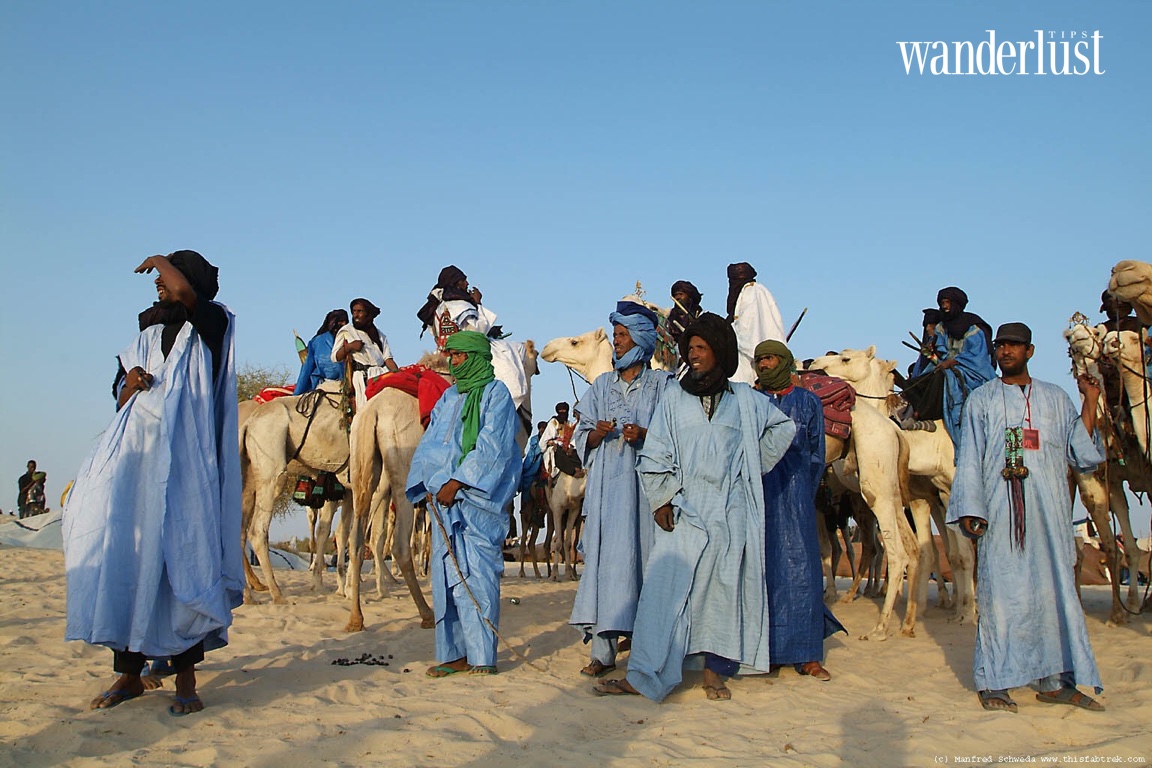
The Tuareg People’s Face Veil: The Mystery Behind the Blue Cloth
The Tuareg people, scattered across the Sahara Desert from Libya to Mali, Niger, are renowned for their men who always cover their faces with a blue veil. This veil is not merely a fashion accessory but carries deep cultural significance.
The Sahara Desert is a harsh environment with scorching sun and dust. The face veil protects the skin from the elements. The color and material of the veil can signify a man’s social status and wealth. In the past, when conflicts were frequent, the face veil helped the Tuareg remain anonymous and protect themselves. Some believe that face covering is linked to Tuareg beliefs, symbolizing humility and respect for the divine.
The face veil is more than just an object; it’s a cultural emblem of the Tuareg people. It is intertwined with the tribe’s history, traditions, and way of life. The veiled face also creates a mysterious allure and piques the curiosity of many. The Tuareg have a nomadic lifestyle, relying on camels for transportation and to find water and food. They have a rich culture with music, poetry, and traditional rituals. Tuareg women also hold a high social position and play important roles in the family and community.
The Tuareg have their own language, belonging to the Berber language group. They are famous for their handicrafts such as jewelry, carpets, and textiles. The Tuareg have a tradition of sharing food and water with passing travelers.
The Tuareg people’s custom of face veiling is a unique and noteworthy cultural trait. The blue veil is not merely an object but a symbol of the history, traditions, and identity of the Tuareg tribe. Understanding this custom helps us better comprehend the life and culture of these desert dwellers.
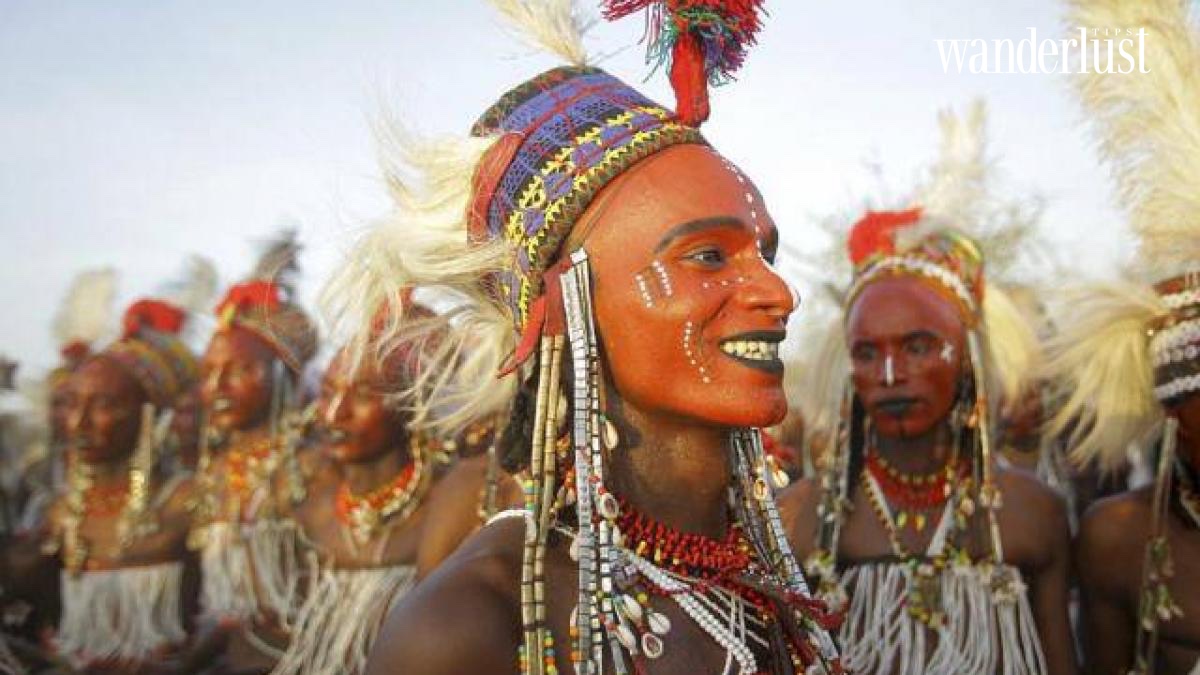
The Maasai Tribe and the Spitting Custom: A Unique Cultural Perspective
Warriors of the Grasslands The Maasai are one of the most famous tribes in East Africa, primarily inhabiting Kenya and Tanzania. They are known for their nomadic lifestyle, cattle herding, and a highly unique culture. The Maasai are renowned for their brave warriors, colorful traditional attire, and distinctive customs.
One of the most intriguing customs of the Maasai is spitting. Unlike many other cultures that view spitting as a rude act, for the Maasai, it is a sign of respect and blessing. When meeting, Maasai people often spit on their hands before shaking hands. They believe this action brings good luck and protection to both individuals. Or, when a child is born, adults in the family will spit on the baby’s face. They believe this will ward off evil spirits and bring the child health. Or when a young person meets an elder, they often spit on their hands before shaking hands to show their respect.
The Maasai believe that everything has a spirit. Saliva is seen as part of the body and carries the person’s energy. The Maasai also believe that spitting can ward off evil spirits and bad things. For the Maasai, spitting is not just a simple act but a way of expressing affection, concern, and respect.
Today, as modern culture increasingly penetrates Maasai life, many young people no longer maintain the spitting custom as frequently as before. However, for many older people, it remains an integral part of their lives and culture. The Maasai spitting custom is a prime example of the diversity and richness of human culture. Although it may seem strange to many, it is an indispensable part of the Maasai tribe’s belief system and values. Understanding and respecting these customs helps us broaden our understanding of the world and different cultures.
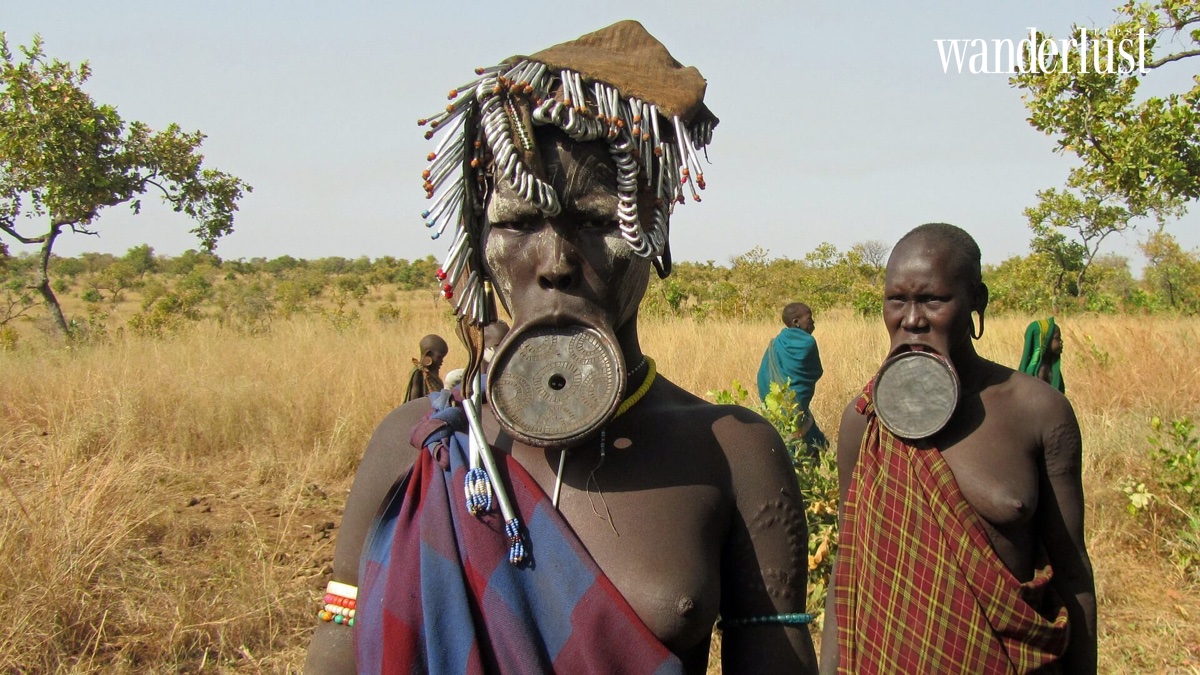
The Mursi Tribe: The Lip Plates
One of the most unique and intriguing beauty customs in the world is the lip-plating tradition of the Mursi tribe, who live in the border region between Ethiopia and Sudan. Mursi women are famous for the large, round plates attached to their lower lips, creating a both strange and captivating image.
For the Mursi people, these lip plates are symbols of beauty and wealth. The larger the plate, the more respected and valuable a woman is considered in marriage. Some researchers suggest that, in the past, large lip plates may have helped protect women from being kidnapped by other tribes. There’s a belief that these plates connect women to the spiritual world and their ancestors.
When Mursi girls reach adulthood, a small hole is cut in their lower lip. Initially, they wear small wooden plates. Gradually, these plates are replaced by larger ones made of clay or wood. The process of stretching the lip is very painful and causes many difficulties in daily life. However, Mursi girls persevere in this custom to demonstrate their courage and beauty.
The Mursi lip-plating custom is not merely a form of beautification but also carries deep cultural significance. It reflects the tribe’s concepts of beauty, human value, and the role of women in Mursi society.
With societal development and the influence of modern culture, the Mursi lip-plating custom is gradually changing. Many young girls no longer wish to participate in this tradition. However, some people still preserve the tradition and see it as an indispensable part of their cultural identity.
The Mursi lip-plating custom is a unique and controversial cultural trait. Although there are differing opinions, it cannot be denied that it is an important part of this tribe’s history and culture. Understanding and respecting these different customs is a way for us to broaden our understanding of the world and its people.

